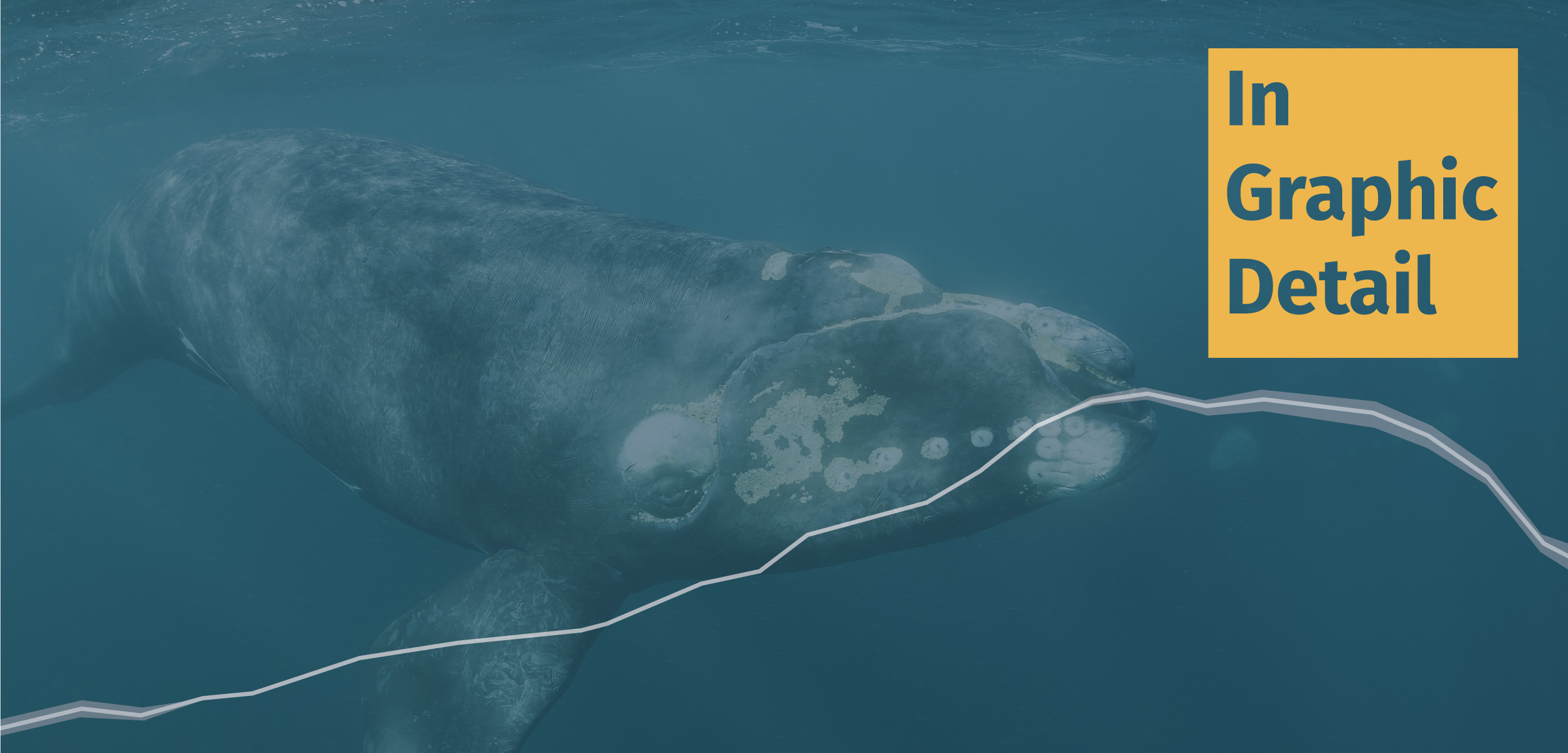In Graphic Detail: The Right Whales Aren’t All Right
But the news isn’t all bad.
Article body copy
The odds of survival look increasingly grim for the North Atlantic right whale, one of the world’s most endangered large whales. The population, estimated at just 336 animals in October 2021, is the smallest it’s been in two decades. “It’s bad. You can put a bunch of adjectives on that, but the short answer is it’s really dire,” says Sean Hayes, who heads up endangered species monitoring for the US National Oceanic and Atmospheric Administration in Woods Hole, Massachusetts.
Right whale deaths now outpace births due to threats from shipping, commercial fishing, and climate change in the cetacean’s habitat along the Eastern Seaboard of the United States. Traditionally, the whales frequented coastal breeding grounds off South Carolina, Georgia, and Florida and the plentiful abundant zooplankton buffets of New England at predictable times of year. But around 2010, perhaps because warming waters were affecting the abundance of their prey in the Gulf of Maine, part of the population began spending summers in new locations, such as Canada’s Gulf of St. Lawrence, where deaths skyrocketed. Since 2017, more than 50 right whales have died or been seriously injured, mostly in Canadian waters.
It’s rare to observe the carcasses, explains Hayes, so the cause of death is often unknown, but ship strikes and entanglement in the float-topped fishing lines that mark crab traps and lobster pots account for 72 percent of incidents. The animals navigate a treacherous obstacle course. “There are several million fishing lines between the United States and Canada, and there are thousands and thousands of vessels,” says Hayes.
More than 80 percent of right whales have been entangled at least once. The ropes and floats hamper swimming and sap the energy available for growth, leaving the whales smaller, on average, than 40 years ago. Females that are stressed conceive less often, and those that do become pregnant or are raising calves die more quickly if entangled. This leaves a population that now skews male, further impeding species recovery.
But Hayes is holding out hope, particularly because right whales have recovered from even lower numbers in the past. The population climbed back from near extinction in the 1890s, when the species was known to industrial whalers as “the right whale to catch.” Vessel speed rules, fisheries closures, and ropeless traps offer some respite. “We have the technology to give them that potential recovery, and I think they have the capacity,” Hayes adds.
In a positive omen, 2021 saw 20 births, including Grand Teton’s eighth calf, the second for Bocce, who survived a vessel strike in 2011, and the first for 12-year-old Champagne. With nearly as many births as the previous four years combined, this upswing is something to celebrate.


